Amazonia has ample, inexpensive land, water and suitable climate to raise M. rosenbergii
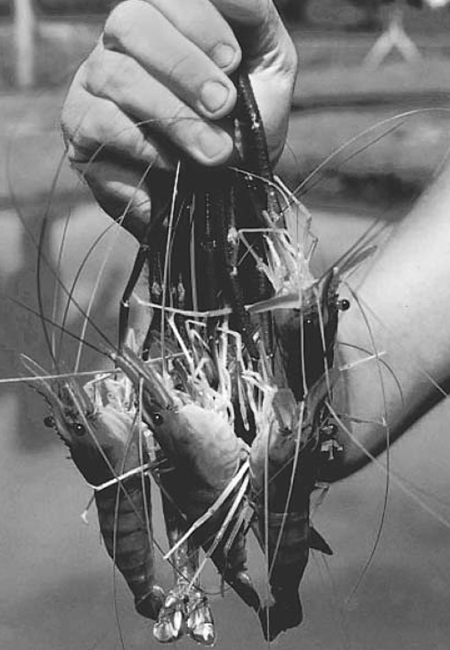
The Brazilian Amazonia region encompasses a huge area of 5.2 million square kilometers, with most of this equatorial area covered by rain forest crisscrossed by large rivers. The riverine population includes over a million people who largely depend – directly or indirectly – on fishing activities for their subsistence.
Freshwater prawns (Macrobrachium spp.) are commonly harvested by artisanal fishermen and traditionally consumed by locals. The shrimp are very well accepted by consumers of all social classes. Survey responses from farmers and public institutions in the area support the continued development of aquaculture projects that raise freshwater prawns in Amazonia.
Development and species
Freshwater prawns have been farmed in Amazonia since the late 1980s. From 1998 to 2000, prawns were cultured in seven of its states – Amapá, Amazonas, Maranhão, Mato Grosso, Pará, Roraima and Tocantins – but most of the activity is concentrated in Pará’s northeastern region.
The main cultured species is the Malaysian or Giant prawn, (Macrobrachium rosenbergii), but pilot production of the Amazon River prawn (M. amazonicum) began in 1996. Consumers prefer the latter species because the taste is stronger and the muscle texture is firmer.
Postlarvae supply
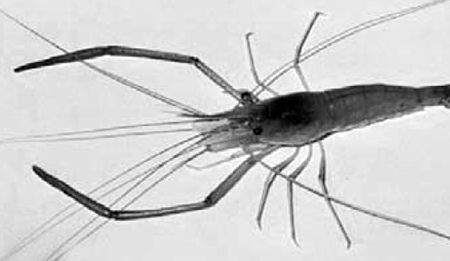
A government hatchery in Pará, the only one in Amazonia, has the capacity to produce 3.5 million postlarvae (PL) a year. However, only about 1.0 to 1.5 million PLs are normally distributed to farmers each year.
The hatchery operates a flow-through system, where larvae are stocked at 100 animals per liter. Productivity is about 40 PLs per liter after 30 days for M. rosenbergii, or 40 PLs per liter after 20 days for M. amazonicum. M. rosenbergii PL are sold for U.S. $6 per 1,000 PLs, and M. amazonicum go for U.S. $5 per 1,000 PLs.
Almost 80 percent of the postlarvae stocked by Amazonia farmers comes from the Pará hatchery, and the remainder is supplied by hatcheries from other Brazilian regions. In Amapá, a small farm collects and stocks wild M. amazonicum PLs.
Grow-out
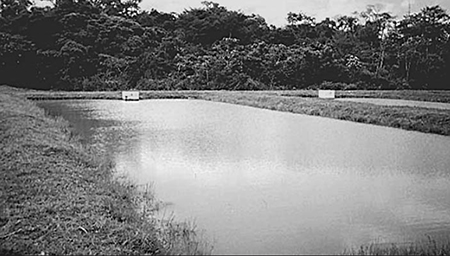
Grow-out pond area is currently about 60 ha, with an estimated production of around 70 metric tons (MT). There are four larger farms with 10 to 15 ha of ponds each (Fig. 1). The rest of the farms have less than 1 ha of pond area (Fig. 2).
Amazonia aquafarmers frequently switch between finfish and freshwater prawn production, depending on seedstock availability (PLs or fingerlings). Semi-intensive, continuous, and batch culture are generally carried out with a low level of technology.
Prawns are stocked at 10 to 25 PL per square meter and fed commercial poultry feeds, farm-made feeds, and commercial fish aquafeed, as well as animal and vegetable by-products. The cost of commercial feed is U.S. $0.20 to 0.45 per kilogram.
The larger farms are each operated by three of four salaried workers. Prawn production ranges 800 to 1,000 per kilogram per hectare year, although one farmer has reported productivity of 3,500 kilogram per hectare year. The operating cost is about U.S. $2.10 per kilogram, and fresh, head-on prawns sell for U.S. $2.50 to 6.00 per kilogram.
Constraints and opportunities
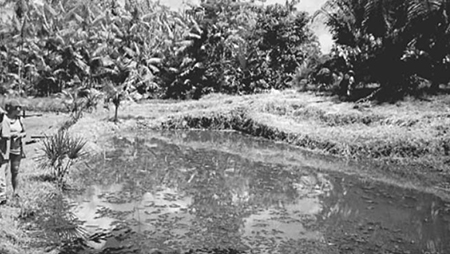
The production chain for freshwater prawn culture in Amazonia has many weak elements, as is the case with almost all other aquaculture sectors in Brazil. The main development constraints are the lack of technology-transfer programs and technical assistance, an irregular postlarvae distribution schedule, scarcity of manufactured aquaculture feeds and ingredients for on-farm aquafeed preparation, limited supply of ice, and difficulties in obtaining credit from financial institutions.
On the other hand, Amazonia has ample, inexpensive land, and water and climate conditions are very suitable for freshwater prawn farming. The freshwater supply is unlimited and temperature is high year-round in most sites, supporting up to three growout cycles a year. Labor is inexpensive and readily available. The prawns also have good acceptance in the local market.
There is much potential to produce prawns using simple and very inexpensive fences and pens constructed in shallow areas of rivers. However, productivity of 4,500 kilogram per hectare year could be reached using more intensive technologies.
Freshwater prawn farming is a flexible activity that can be carried out on a small, medium, or large scale, and there are investment opportunities for all. The hatchery phase can be carried out in large hatcheries with sophisticated technology, or in very simple systems. The growout phase can use technology appropriate to the conditions of the area and available capital. Both simple and sophisticated production systems can be economically viable, as long as they are appropriately planned and operated.
Conclusion
Freshwater prawn farming could become an important activity for economic and social development of the Brazilian Amazonia region. Larger companies could produce M. rosenbergii using more intensive technology to produce prawns for local consumption and export. M. amazonicum could be used in extensive culture or for enhancing fisheries, which could potentially benefit riverine populations.
Culture of both species can also be carried out in small, family-operated units, which would enhance family income and the local economy. As prawn farming grows in Amazonia, however, one of the main government challenges will be to set up development policies compatible with environmental preservation.
(Editor’s Note: This article was originally published in the October 2001 print edition of the Global Aquaculture Advocate.)
Now that you've reached the end of the article ...
… please consider supporting GSA’s mission to advance responsible seafood practices through education, advocacy and third-party assurances. The Advocate aims to document the evolution of responsible seafood practices and share the expansive knowledge of our vast network of contributors.
By becoming a Global Seafood Alliance member, you’re ensuring that all of the pre-competitive work we do through member benefits, resources and events can continue. Individual membership costs just $50 a year.
Not a GSA member? Join us.
Authors
-
Patrícia M. Contente Moraes-Riodades
Depto. de Biologia Aplicada
FCAV, UNESP
Sao Paulo State University
Aquaculture Center
Jaboticabal, SP, Brazil -
Wagner C. Valenti
Depto. de Biologia Aplicada
FCAV, UNESP
Sao Paulo State University
Aquaculture Center
Jaboticabal, SP, Brazil
Related Posts
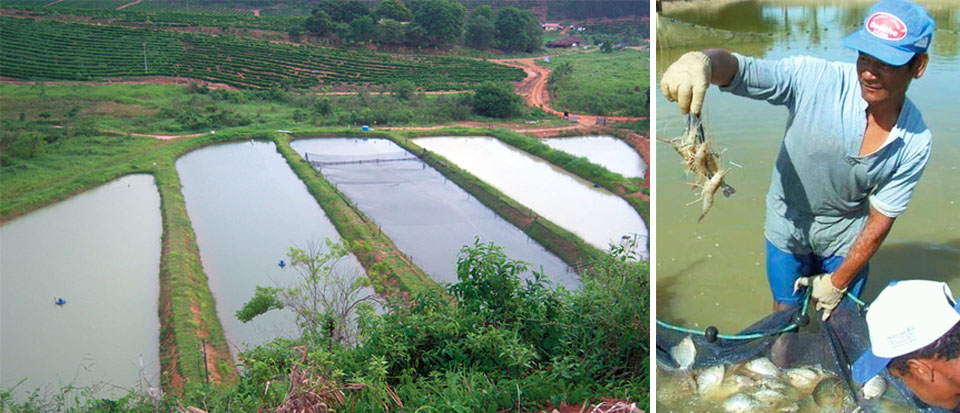
Health & Welfare
Freshwater prawn farming in Brazil
At present, Macrobrachium rosenbergii is the only shrimp species commercially farmed in Brazil. Most freshwater prawn farms are small, and prawn culture is often a secondary farming activity.
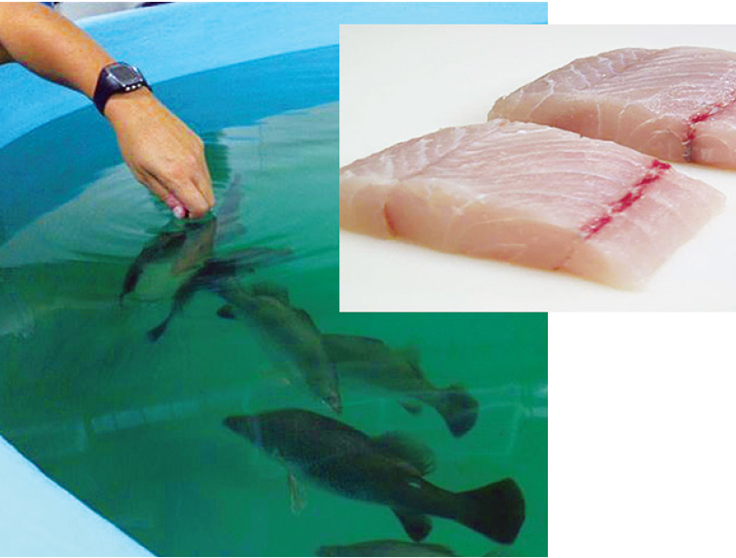
Intelligence
Adding flavor complexity to farmed barramundi
Organoleptic attributes such as flavor and aroma are among the most important factors that influence consumer acceptability and demand for fish products. Consumers have identified farmed fish as less complex and lacking “sealike” or “sea-fresh” flavors and aromas.
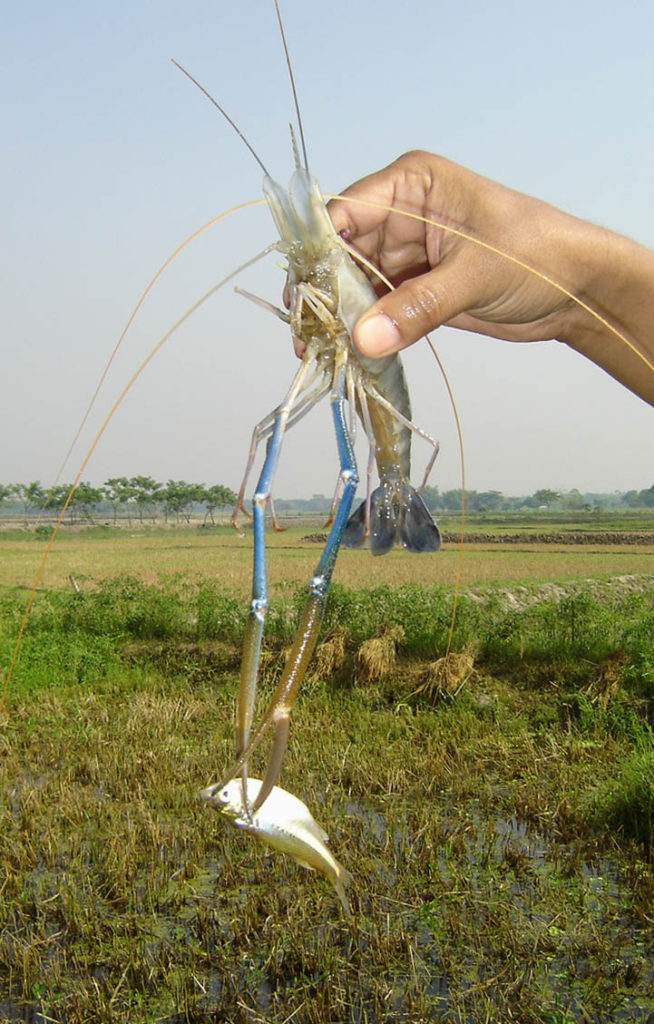
Responsibility
Bangladesh study examines potential for prawn cage farming
While Bangladesh's prawn industry is based on pond culture, a feasibility study was conducted to establish prawn cage culture to benefit resource-poor fishers and landless people.
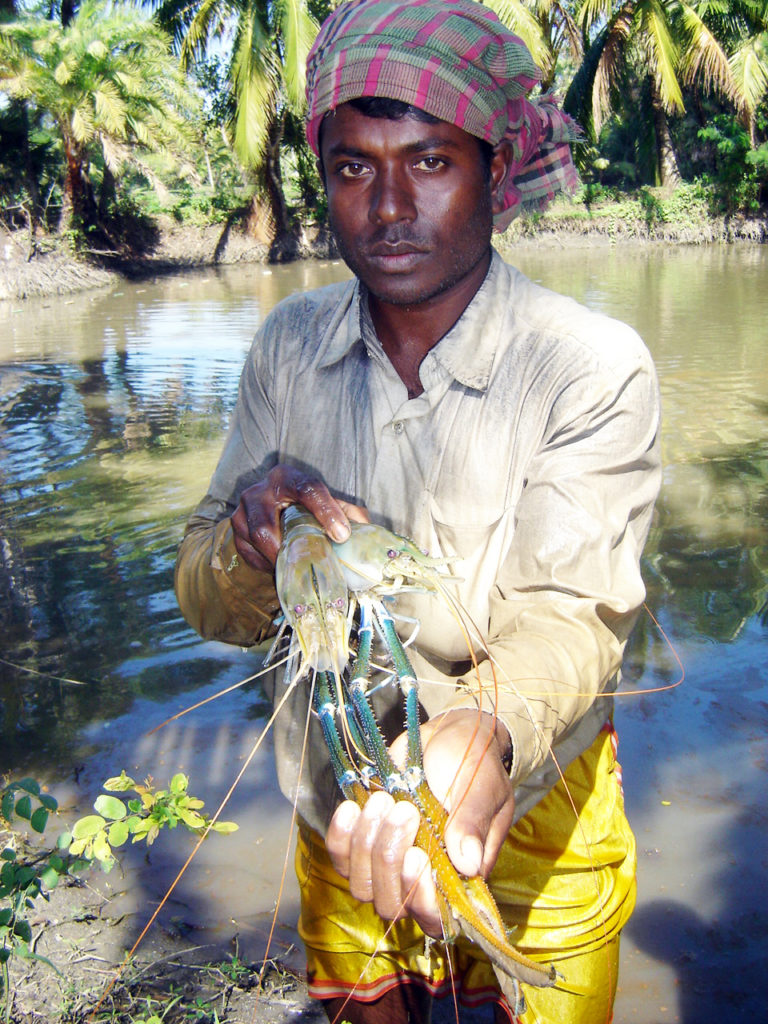
Responsibility
Integrated prawn-fish-rice culture aids Bangladesh farmers, related workers, economy
Prawn-fish-rice farming is considered highly efficient in terms of resource utilization through the complementary use of land and water. Integrated prawn farming plays an important role in the economy of Bangladesh, earning foreign exchange, increasing food production and providing employment opportunities.



